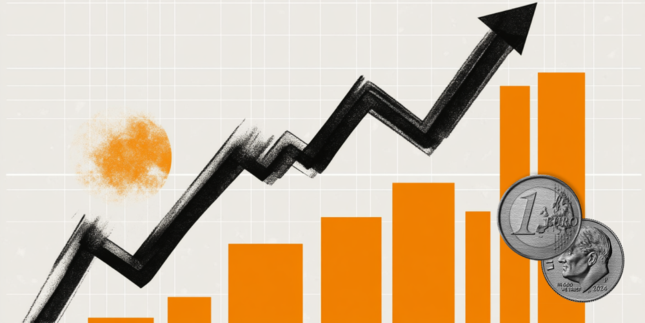-
Opps!
This language contents are not available!

WTI rises to near $71.00 following fresh US sanctions on Iran’s Oil
- WTI price rose as the US imposed sanctions on brokers, tanker operators, and shipping companies involved in Iranian petroleum.
- Oil price gains were capped as Trump announced to proceed with import tariffs on Canada and Mexico.
- French President Emmanuel Macron suggested a truce between Ukraine and Russia could be reached in the coming weeks.
West Texas Intermediate (WTI) Oil price continues its upward momentum for the second consecutive day, trading around $70.90 per barrel during European hours on Tuesday. Crude Oil prices are rising as fresh United States (US) sanctions on Iran’s Oil trade heighten concerns about tighter global supply.
On Monday, the US imposed sanctions on more than 30 brokers, tanker operators, and shipping companies involved in the sale and transportation of Iranian petroleum. This represents the second wave of sanctions as US President Donald Trump seeks to drive Iran's crude exports to zero in an effort to prevent the country from developing nuclear weapons, per Reuters.
However, Oil price gains were limited by an uncertain demand outlook after President Trump stated late Monday that sweeping US tariffs on imports from Canada and Mexico “will go forward” when the current one-month delay expires next week. Trump reiterated his belief that the US has been “taken advantage of” by foreign nations and affirmed his plan to enforce so-called reciprocal tariffs.
Market participants also assessed the possibility of a peace deal in the Ukraine conflict, which could ease sanctions on Russia and potentially increase its Oil exports. French President Emmanuel Macron told Fox News late Monday that a truce between Ukraine and Russia could be reached in the coming weeks following discussions with Donald Trump at the White House on the third anniversary of Russia's invasion.
Meanwhile, the potential resumption of Oil shipments from Iraq’s Kurdistan region could help mitigate the impact of reduced Iranian exports. Iraq is awaiting Turkey's approval to restart Oil flows from the Kurdistan region, with the Iraqi Oil minister expressing hope on Monday that Kurdish Oil exports could resume within two days.
WTI Oil FAQs
WTI Oil is a type of Crude Oil sold on international markets. The WTI stands for West Texas Intermediate, one of three major types including Brent and Dubai Crude. WTI is also referred to as “light” and “sweet” because of its relatively low gravity and sulfur content respectively. It is considered a high quality Oil that is easily refined. It is sourced in the United States and distributed via the Cushing hub, which is considered “The Pipeline Crossroads of the World”. It is a benchmark for the Oil market and WTI price is frequently quoted in the media.
Like all assets, supply and demand are the key drivers of WTI Oil price. As such, global growth can be a driver of increased demand and vice versa for weak global growth. Political instability, wars, and sanctions can disrupt supply and impact prices. The decisions of OPEC, a group of major Oil-producing countries, is another key driver of price. The value of the US Dollar influences the price of WTI Crude Oil, since Oil is predominantly traded in US Dollars, thus a weaker US Dollar can make Oil more affordable and vice versa.
The weekly Oil inventory reports published by the American Petroleum Institute (API) and the Energy Information Agency (EIA) impact the price of WTI Oil. Changes in inventories reflect fluctuating supply and demand. If the data shows a drop in inventories it can indicate increased demand, pushing up Oil price. Higher inventories can reflect increased supply, pushing down prices. API’s report is published every Tuesday and EIA’s the day after. Their results are usually similar, falling within 1% of each other 75% of the time. The EIA data is considered more reliable, since it is a government agency.
OPEC (Organization of the Petroleum Exporting Countries) is a group of 12 Oil-producing nations who collectively decide production quotas for member countries at twice-yearly meetings. Their decisions often impact WTI Oil prices. When OPEC decides to lower quotas, it can tighten supply, pushing up Oil prices. When OPEC increases production, it has the opposite effect. OPEC+ refers to an expanded group that includes ten extra non-OPEC members, the most notable of which is Russia.
Forex News
Keep up with the financial markets, know what's happening and what is affecting the markets with our latest market updates. Analyze market movers, trends and build your trading strategies accordingly.


























